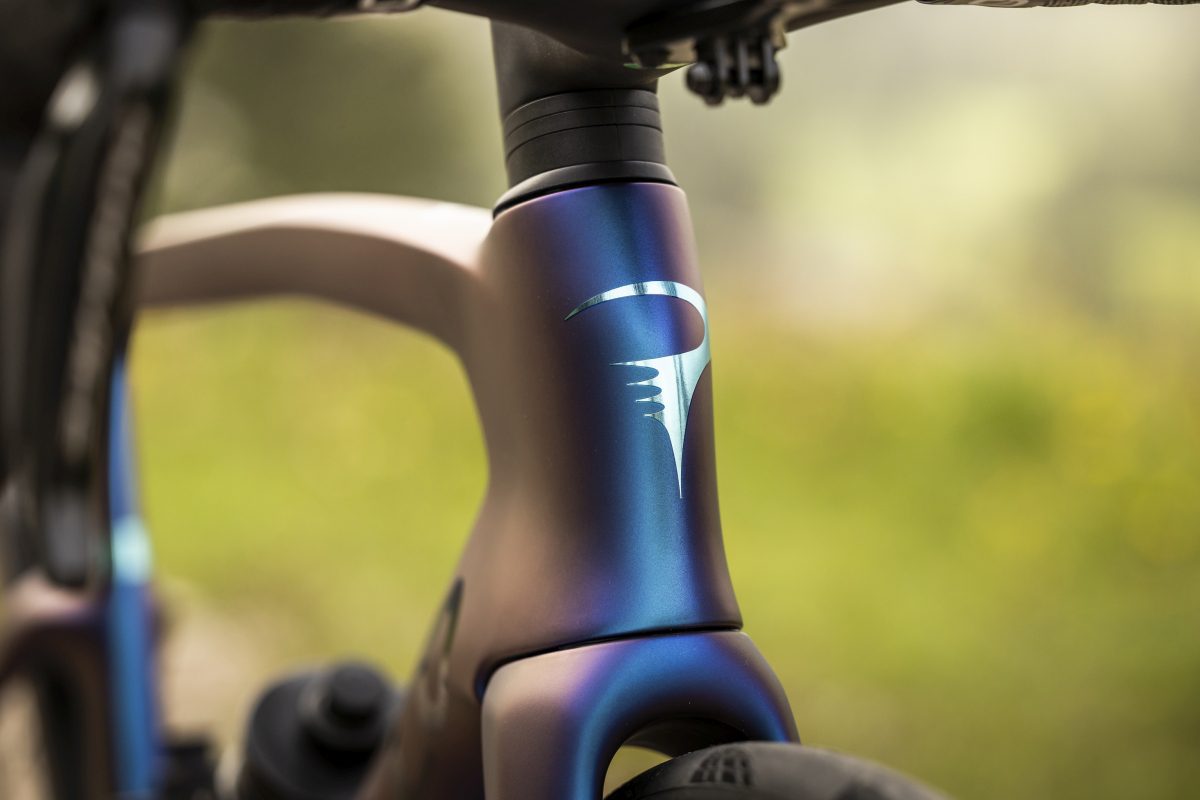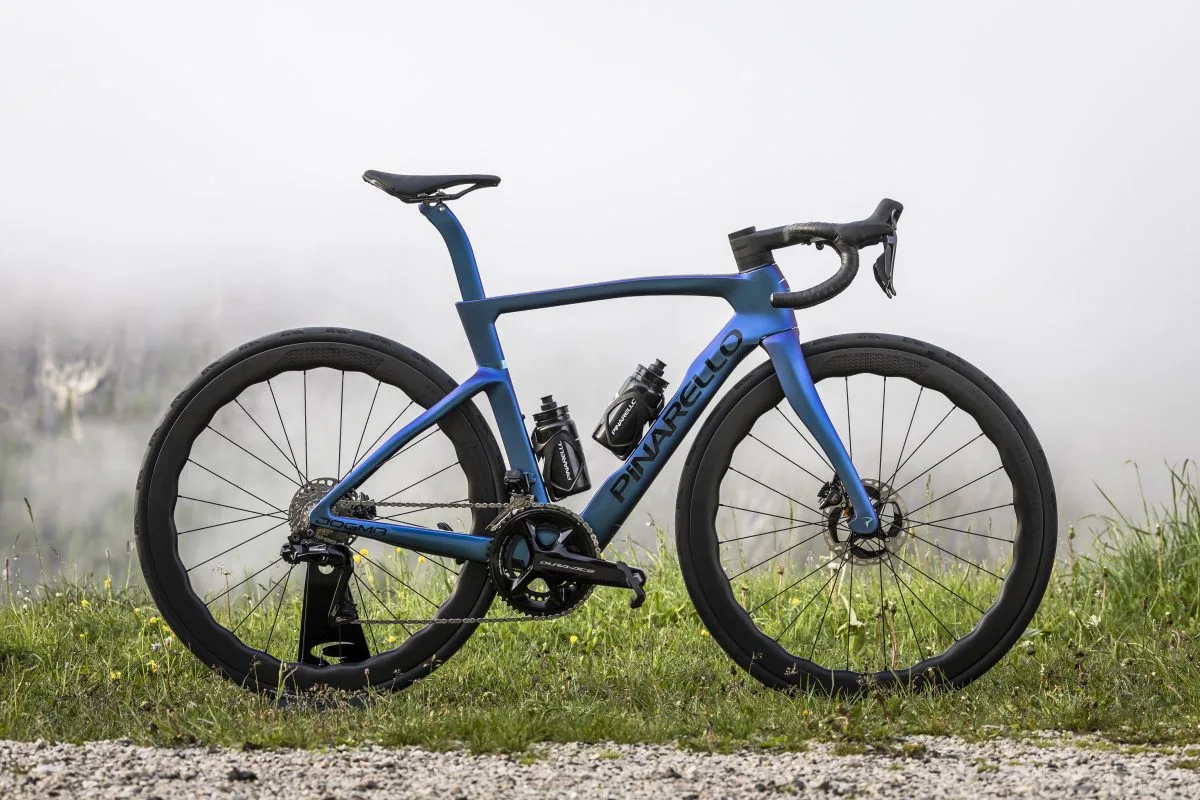“We are very proud that we’ve always only had one race bike, for Grand Tours and one day Classics,” said Federico Sbrissa, Pinarello’s director of marketing, early on in the unveiling of the new Pinarello Dogma F. “We’ve never chased trends, and after years of climbing bikes and aero bikes, now the big brands have come back around to our way of thinking.”
Though it was delivered with a tone of slight amusement, intended as a bit of lighthearted jab at the competition, it was also revealing of Pinarello’s thinking with the new Dogma F. The company is proud of the fact that previous iterations of the flagship bike are validated by market trends. Therefore, the latest Dogma F is not a radical re-think of the existing template. If it ain’t broke, don’t fix it, as the cliché goes. Though somewhat toned down compared with earlier iterations, the latest Dogma F still has that distinctive Pinarello silhouette. At a glance, it is hard to distinguish from its outgoing predecessor.
With the Pinarello Dogma F, aero mostly trumps weight
In the progressive corners of road racing, it has become a truism that most of the time, aero trumps weight. But where is the balance between aero versus weight? Throughout the course of a Grand Tour, how much power is consumed overcoming aero? How much for weight? What about rolling resistance? When looking to update and improve the Dogma F, Pinarello decided it needed to quantify the requirements, get some hard numbers.
Leaning on their partnership with Team Ineos, the company compiled every bit of data available from Geraint Thomas’s 2022 Tour de France ride, and ran an analysis of how much of Thomas’s power is going toward overcoming all of these different points of resistance to create forward propulsion. It was no surprise that on the flat stages, aerodynamic drag consumed the lion’s share of Thomas’s power output. But even on the big mountain days, the power requirement of overcoming aerodynamic drag versus weight was still “close to 50/50” according to Sbrissa. “It really confirmed our idea that it is a balance between aero and weight,” he said. Further, they were able to work out that a mere “0.2 per cent reduction of CdA (measure of aerodynamic efficiency) equates to 175-g reduction in weight of the bike.”

Click Here to Read the Full Original Article at Canadian Cycling Magazine…

